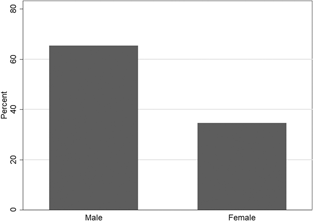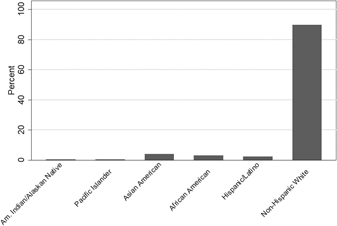Political science departments, along with the colleges and universities within which they operate, seek to diversify for various reasons. However, despite these efforts—often representing millions of dollars’ worth of investment (Sinclair-Chapman Reference Sinclair-Chapman2015)—political science remains a predominantly white male field. We are not the first to note the lack of diversification. PS: Political Science & Politics has published several articles and symposia on issues of diversity. However, the majority of publications pertaining to these issues assume a predominantly gender-focused perspective. From 1993 to 2017, more than 50 articles pertained to gender inequalities in the profession, whereas only a few articles addressed racial and ethnic disparities or other forms of diversity, including one symposium on LGBTQ issues in the January 2011 issue.Footnote 1 Although many of these gender-oriented articles include acknowledgment of other dimensions of diversity and intersectionality, the lack of those focusing on these dimensions is noticeable. Indeed, the majority can address changes in the participation of only white women in the field; people of color are relegated as the catch-all for all non-white individuals because there simply are too few non-white scholars to systematically evaluate. Furthermore, this lack of representation means that we, as a field, cannot address how women of color and other intersectional groups experience compounded inequalities and disenfranchisement.
Our ability to address these deficiencies hinges on our efforts to evaluate the current state of the discipline—in terms of membership in the field as well as the processes that hinder meaningful inclusion. Hence, we surveyed our Public Law Section to better evaluate our progress in its diversification efforts. We emailed a survey to all 480 Law and Courts Section membersFootnote 2 to establish our basic demographics. We received 295 responses, a 61% response rate, to a series of five questions. The questions inquired about an individual’s gender, age, ethnicity, employment situation, and academic affiliation. We present the raw results of the survey and reflect on how our section compares to other APSA sections and academia more generally.
Although APSA provides data on discipline and subfield demographics through its new dashboard,Footnote 3 these data are in the aggregate and proprietary. Our survey measure enabled us to evaluate individual-level data and examine more than only descriptive statistics. It is useful to know, for example, the proportion of women of color in public law. The APSA dashboard can display women or people of color in the field; however, it cannot do both. This limits its usefulness to subfields that want to take targeted action to improve intersectional diversity within their membership.
Unfortunately, we cannot present individual-level data on several groups of people of color or on sexual orientation because such a discussion would inadvertently identify individual members of our section. There is so little representation across the dimensions of sexual orientation and intersectionality that to discuss them would be to “out” individual scholars.Footnote 4 Thus, to protect their anonymity and privacy, we omitted these important dimensions. Nonetheless, the very lack of representation should indicate the utter lack of progress in these dimensions. This is a massive problem.
Despite the conscientious efforts of members in our section, we found that women reflect only 35% of the Law and Courts membership (figure 1). Although this is higher than the 29% of women in APSA in 2010, it remains lower than the 49% of female faculty within academia generally as of 2013 (Toven Reference Toven2015). Hence, a 14% gap exists between the proportions of female faculty in public law and those in academia more generally. APSA lags behind the rest of academia by nearly 20 percentage points.
Despite the conscientious efforts of members in our section, we found that women reflect only 35% of the Law and Courts membership (figure 1). Although this is higher than the 29% of women in APSA in 2010, it remains lower than the 49% of female faculty within academia generally as of 2013 (Toven Reference Toven2015).
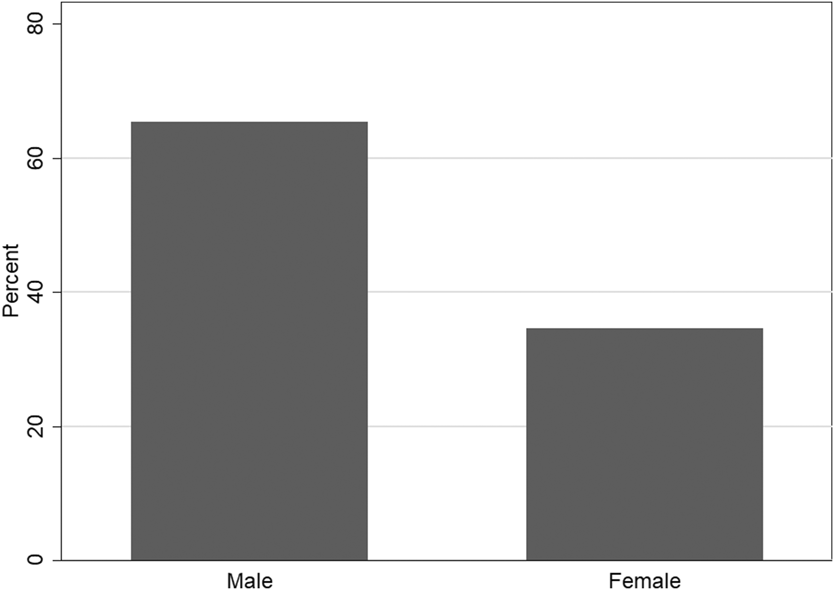
Figure 1 Gender Diversity in Law and Courts
The average APSA subfield has approximately 38% female membership; however, there exists significant dispersion around that number (figure 2). Notable outliers include political methodology, with 19.92% female membership, and women and politics, with 91.67%. In fact, 37 subfields within political science fall below the 2013 average number of women in academia. Thus, gender disparity remains a systemic problem: 37 of 44 total (reported) subfields still fail to reach parity.
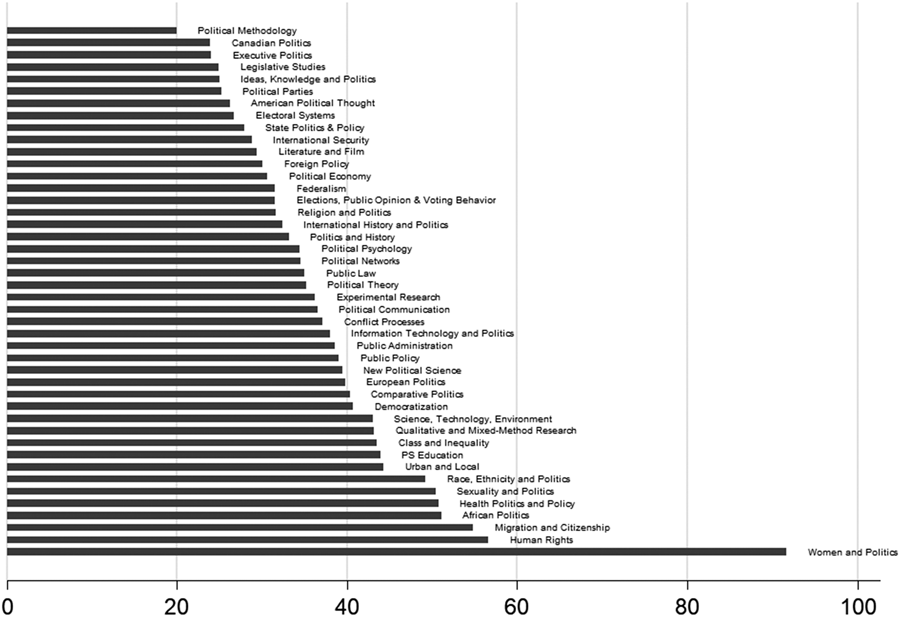
Figure 2 APSA Subfields by Female Membership
Similar issues appear regarding ethnic diversity—although the contrast is even starker. Within the Law and Courts Section, nearly 90% of our membership identifies as non-Hispanic white. This is a full 15% gap between our subfield and academia more generally, in which 77% of full-time faculty identified as white in 2015 (US Department of Education 2017). As shown in figure 3, Hispanics and African Americans comprised barely 5% of the membership in the Law and Courts Section in 2016. Asian Americans represent roughly 4% of our membership. This survey also revealed that only one member identifies as American Indian/Alaskan Native, and only one member identifies as Pacific Islander. These numbers lag behind APSA 2011 memberships, in which Hispanics and African Americans comprised nearly 10% of all APSA membership (Fraga, Givens, and Pinderhughes Reference Fraga, Givens and Pinderhughes2011).Footnote 5 Yet, this ethnic diversity represented in our discipline in 2011 was not evenly distributed across subfields (figure 4). Only seven subfields (i.e., democratization; comparative politics; political economy; African politics; urban and local politics; migration and citizenship; and race, ethnicity, and politics) were more inclusive than the 2015 national average of full-time faculty (US Department of Education 2017). Thus, despite its efforts, the Law and Courts Section—as well as APSA more generally—suffers from severe systemic underrepresentation of people of color.
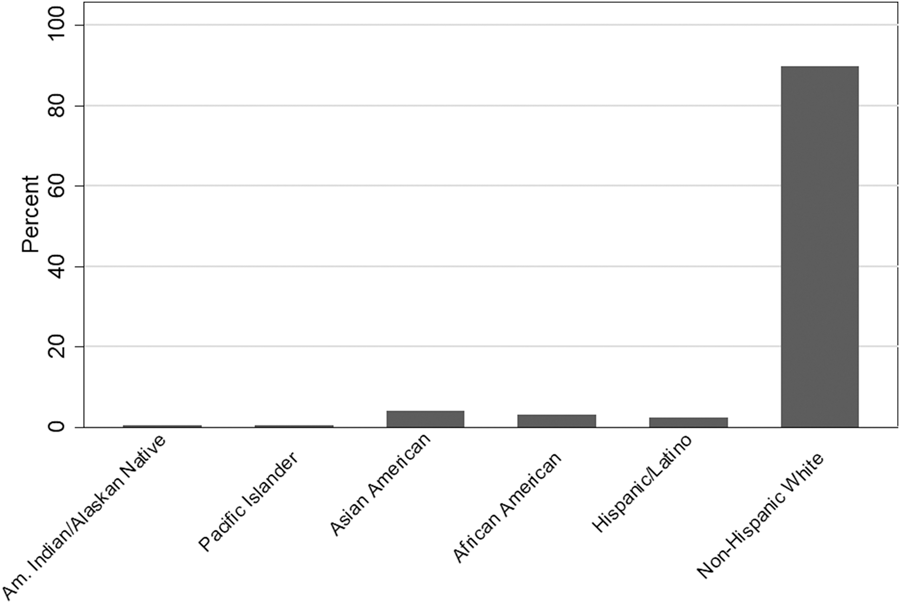
Figure 3 Ethnic Diversity in Law and Courts
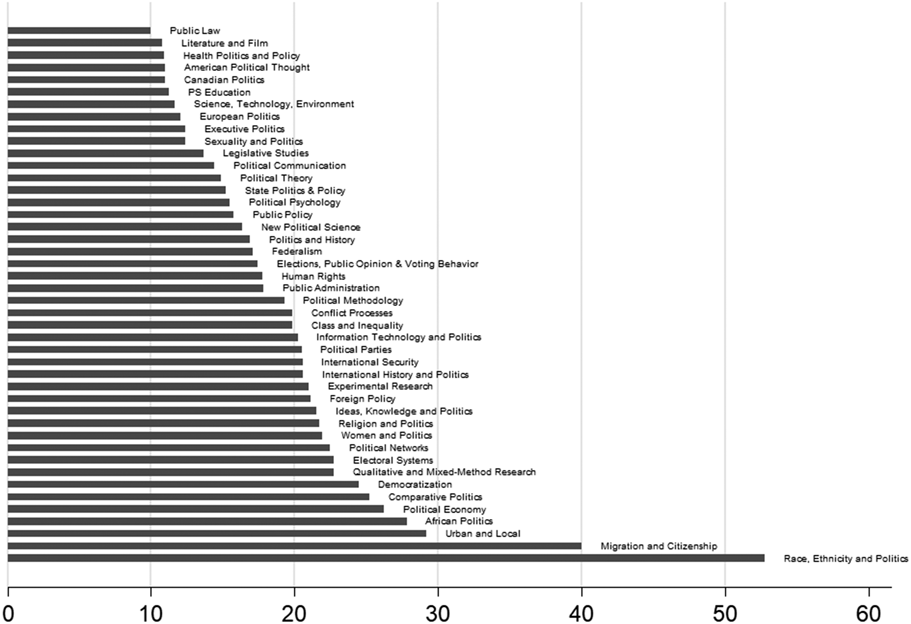
Figure 4 APSA Subfields by Non-White Membership
Addressing the intersection of ethnicity and gender, our survey revealed that 90% of men in the Law and Courts Section are non-Hispanic white—which markedly surpasses the 2015 national average in which 78% of full-time faculty identify as white males (US Department of Education 2017). Only 1% of public law males are African American, which similarly fails to reach the meager 2015 national average of 3%. Only 4% of male public law scholars identify as Asian or Asian American, and the Pacific Islander and American Indian/Alaskan categories are too small to be reported. These numbers similarly fail to reach the 2015 national average in which 6% of faculty represented Asian/Asian Americans and Pacific Islanders. Less than 4% of Law and Courts Section males identify as Hispanic, which is actually more than the 2015 national average of 2%. Nationally, 1% or less of faculty represent American Indian/Alaskan Native identities (US Department of Education 2017). Hence, these groups remain underrepresented in academia as well as in political science and public law.
Only 11% of Law and Courts membership are women of color. Of the public law women, 89% identify as non-Hispanic white—which surpasses the national average for academia in which 77% of full-time faculty identify as white women (US Department of Education 2017). In fact, women in public law mainly represent only three ethnic categories: white (89.22%), Asian or Asian American (3.92%), and African American (6.86%). Only one person (who did not participate in the survey) is a Hispanic female, and no women represent American Indian/Alaskan or Pacific Islander ethnicities. The public law representation of Asian and Asian American identities is similar to the 2015 national average, in which 4% of full-time faculty women were represented. However, this national average included Pacific Islanders, which is not currently represented in the Public Law Section. The section falls short of the national average of 2% Hispanic women. African American women in the Law and Courts Section actually surpassed the 2015 national average of 3% (US Department of Education 2017). However, single-digit representation of women of color is unacceptable.
One explanation for the lack of diversity is that too few minorities earn doctorate degrees and enter the job market. This “pipeline” problem was discredited by Monroe et al. (Reference Monroe, Choi, Howell, Lampros-Monroe, Trejo and Perez2014) and by APSA Placement surveys that instead show that people of color are not getting hired.
WHAT ARE WE DOING WRONG AND HOW DO WE FIX IT?
One explanation for the lack of diversity is that too few minorities earn doctorate degrees and enter the job market. This “pipeline” problem was discredited by Monroe et al. (Reference Monroe, Choi, Howell, Lampros-Monroe, Trejo and Perez2014) and by APSA Placement surveys that instead show that people of color are not getting hired. In 2015–2016, surveys show that 19.2% of black job candidates, 13.7% of Asian or Pacific Islanders, and 28.6% of “other” ethnicities were not placed at all. Hence, there are enough minority job candidates to fill (tenure-track) faculty positions. Our faculty should be at least as representative as the pool from which departments are hiring. We have minority scholars seeking jobs; we just need to hire them.Footnote 6
Furthermore, we must work to retain faculty of color by fixing the “leaky pipeline” (APSA Task Force 2004; Evans and Moulder Reference Evans and Moulder2011; Monforti and Michelson Reference Monforti and Michelson2008). A disproportionate number of women and people of color leave the discipline due to various problems, including gendered and racial disparities in likelihood of promotion (Mershon and Walsh Reference Mershon and Walsh2015), salary disparities (Ginther Reference Ginther2004; Henehan and Sarkees Reference Henehan and Sarkees2009), job and professional satisfaction (Hesli and Lee Reference Hesli and Lee2013), experiences with discrimination (Hesli Reference Hesli2013; Novkov and Barclay Reference Novkov and Barclay2010), and hostile climates in research and teaching (Alexander-Floyd Reference Alexander-Floyd2008; Mathews and Andersen Reference Mathews and Andersen2001). In short, our field tacitly perpetuates the same underlying systemic inequalities and biases that plague our society. Furthermore, at no point can our scholars break free from these hurdles. They remain at all levels of academia because they are fostered by virtually all of the processes associated with political science’s evaluation of merit and advancement.
Even from the outset, lack of representation implicitly tells our minority students that they are not welcome when they do not see faculty who look like them, which limits recruitment. Similarly, academia remains exclusionary through its use of “colorblind” hiring processes, which simply ignore systemic inequalities and contribute to racism (Greenberg Reference Greenberg2015). Even after a scholar is in the discipline, the lack of diversity perpetuates white male power in terms of the types of research our field produces and prioritizes. Accepted paradigms determine which research agendas are appropriate and valuable, and these paradigms systematically devalue research pertaining to race, ethnicity, gender, sexuality, and identity, as well as qualitative work. Scholars who engage in this work often are penalized because it is not perceived as “scientific” (Brettschneider 2011; Hesli and Lee Reference Hesli and Lee2013; Thomas Reference Thomas2017). This devaluation is similarly reflected in their absence in prestigious journals (Breuning and Sanders Reference Breuning and Sanders2007; Evans and Moulder Reference Evans and Moulder2011; Teele and Thelen Reference Teele and Thelen2017) and the lack of citations to these scholars’ work (Maliniak, Powers, and Walter Reference Maliniak, Powers and Walter2013). Because these types of research often are pursued by scholars of color and women, these groups are disproportionately marginalized. Women of color are doubly penalized where they are relegated to “space invaders” because they remain outside both the gendered and racial norms of the discipline (Alexander-Floyd Reference Alexander-Floyd2015).
These scholars are similarly penalized in teaching. Despite the benefits to students because faculty of color and women are more likely to use active-learning techniques and student-centered approaches than their male colleagues (Milem Reference Milem1997) and more likely to include perspectives of minorities in their curriculum (Milem Reference Milem, Chang, Witt, Jones and Hakuta2003), they are systematically biased against in student evaluations (Lilienfeld Reference Lilienfeld2016; Uttl, White, and Gonzalez Reference Uttl, White and Gonzalez2017). Indeed, teaching excellence appears to be acknowledged only by their peers in that women receive more teaching awards than their male colleagues—but only in research-oriented institutions that prioritize research for tenure (Butcher and Kersey Reference Butcher and Kersey2015). Hence, teaching excellence—when credited—directly undermines their professional advancement.
In terms of service, scholars of color and women end up serving as “tokens,” overwhelmingly relied on for service on committees (Mitchell and Hesli Reference Mitchell and Hesli2013; Pyke Reference Pyke2011). Service and teaching further intersect when scholars of color and women take on the more invisible labor of student mentorship and advising (June 2015; Whitaker Reference Whitaker2017). Hence, especially for women of color, these scholars are invisible or marginalized as competent researchers, underappreciated in teaching (or appreciated at their own professional detriment), and hyper-visible in service in which institutions extract additional labor from them (Alexander-Floyd Reference Alexander-Floyd2015; Padilla Reference Padilla1994). Scholars of color and women are penalized literally at every step of their academic career.
To the extent that our field thereby marginalizes and excludes research agendas, epistemologies, and methods that do not neatly fit into this framework, we are perpetuating and reproducing the same discriminatory barriers—which are entirely contradictory to the mission of education.
Despite the plethora of empirical support revealing these systemic failures, political science and public law simply have not done enough to address them. Whereas some changes could be instituted immediately, most solutions likely will require longer-term strategies. Indeed, these systemic biases must be addressed head on, and training workshops discussing equal opportunity do not cut it.
Perhaps the main reason for our discipline’s failure to adequately redress these issues is its assumption that diversification requires a tradeoff with scientific excellence, rigor, and academic prestige (Alvarez Reference Alvarez2017; Hero Reference Hero2015). Scientific excellence and merit are not mutually exclusive from diversification and inclusion. Indeed, excellence does not have a single legitimate definition. Political science prides itself for being “objective” and “scientific,” which are largely equated with quantitative research on “appropriate” or “legitimate” research agendas dictated by the inheritance of the Western, white, hetero-normative, male template for education and science (Thomas Reference Thomas2017). To the extent that our field thereby marginalizes and excludes research agendas, epistemologies, and methods that do not neatly fit into this framework, we are perpetuating and reproducing the same discriminatory barriers—which are entirely contradictory to the mission of education. Substantively, scholars who focus on critical theory, race, gender, ethnicity, sexuality, and identities (among others) are marginalized because these research agendas are criticized as not being science, as only attractive to specialized audiences, as self-serving, as voluntary marginalization through identity politics, as confusing one’s professional and personal lives, and as political advocacy and lobbying masquerading as scholarship (Mucciaroni Reference Mucciaroni2011). Yet, these scholars undergo the same courses, research training, and peer-review processes. Hence, their exclusion is derived mostly from the superiority complex inherited by discriminatory traditions perpetuated by mainstream scholars who seem to derive their self-worth from being in an elite class defined by its exclusionary nature.
Therefore, we can and should have an inclusive, diverse field of scholars who produce rigorous, innovative scientific research. There is no tradeoff. Once we decide to relinquish the myth of superiority that excludes these scholars, we finally can begin the effortful discussion and reform to generate an inclusive community of scholars. The onus falls on each of us. We challenge each subfield to take an accurate accounting of its membership. This foundational step will allow section leadership to develop a personalized strategy that targets the goals for each subfield. Furthermore, we must account for our failures to acknowledge women of color and others who have been systematically marginalized and ignored, even by APSA membership data. At a minimum, data collection must include intersectional identities. We cannot revise our policies without these data. In summary, without this acknowledgment, evaluation, discussion, and deliberate reform, the damning response to why there is no diversity in academia will truly be because we do not want it.




